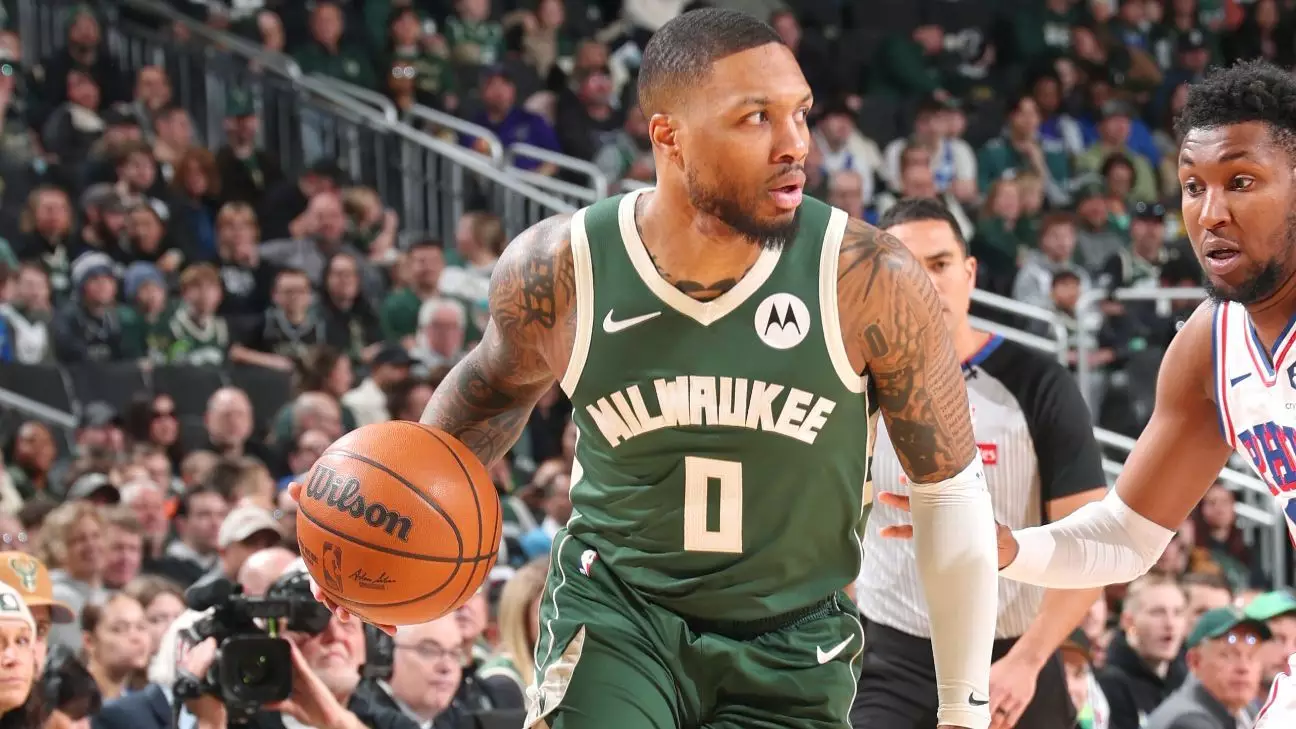As the NBA playoffs loom, the Milwaukee Bucks find themselves in a precarious position regarding their star player, Damian Lillard. The nine-time All-Star, who has been out since March 18 due to a deep vein thrombosis in his right calf, is not expected to play in Game 1 against the Indiana Pacers. The juxtaposition of his significant performance levels and his current health status unveils a critical dilemma for the Bucks. While his absence could severely alter the team’s playoff trajectory, the ongoing concern for Lillard’s health underscores a deeper narrative about athlete safety and the stakes involved in professional sports.
Health Comes First: A Team’s Responsibility
The Bucks organization is rightfully prioritizing Lillard’s health above all else. As emphasized by general manager Jon Horst, the team’s commitment to Lillard’s recovery seems unwavering. Reports indicate that Lillard has shown promising signs of improvement, such as a reduction in the size of the blood clot; however, his inability to engage in full basketball activities paints a complex picture. The issue isn’t just about what Lillard can contribute on the court, but rather, the long-term implications of rushing back a player in his 14th season. The ethical responsibilities teams hold toward their players’ health cannot be overstated.
The Ripple Effect of His Absence
Lillard’s absence raises significant concerns about the Bucks’ performance in the playoffs. Before his injury, he was averaging a remarkable 24.9 points and 7.1 assists per game, numbers that illustrate not only his scoring prowess but also his playmaking ability. The team managed to secure a strong finish to the regular season, going 10-4 and even ending on an eight-game winning streak. However, the strategy and chemistry they developed during that stretch may falter without Lillard’s leadership on the floor. Coach Doc Rivers has voiced cautious optimism about the possibility of Lillard’s return, yet he also prepares for a playoff series that could turn unpredictable without their star guard.
A Broader Perspective on Health and Performance
This situation invites us to rethink how we assess an athlete’s value. The dialogue must shift from reliance on statistics to a holistic view that incorporates health stability and player longevity. Teams are driven by results, and the immediate crisis of playoff performance often overshadows health risks. The integration of player health data and critically analyzing the role of physical well-being in the sporting world become paramount. As the playoffs approach, scenarios like Lillard’s lead to a pivotal moment for team management, performance analytics, and fan expectations.
The narrative of Damian Lillard extends beyond the hardwood; it intertwines with the ethos of self-care versus competitive necessity. As fans and analysts alike hold their breath, the stakes unravel into a broader discussion about player health that could redefine how we view excellence in sports. Can a team truly thrive under the pressure of a playoff run when its cornerstone is sidelined? Only time will tell, but the conversation surrounding athlete well-being is undoubtedly at the forefront of this unfolding saga.

